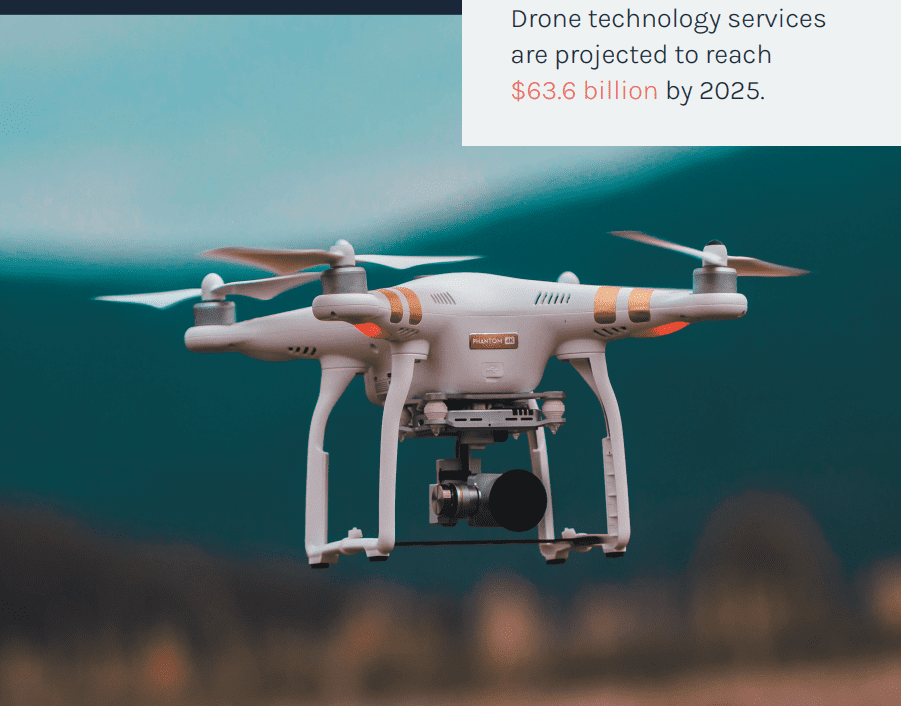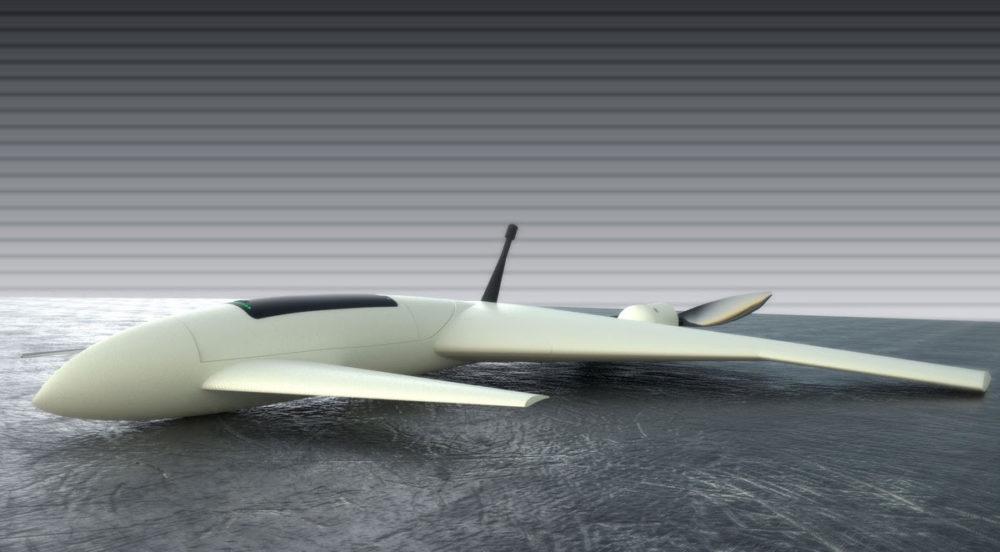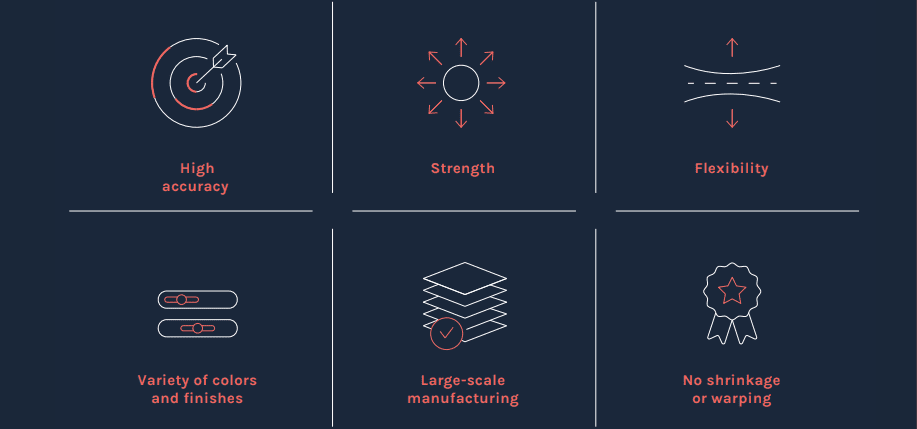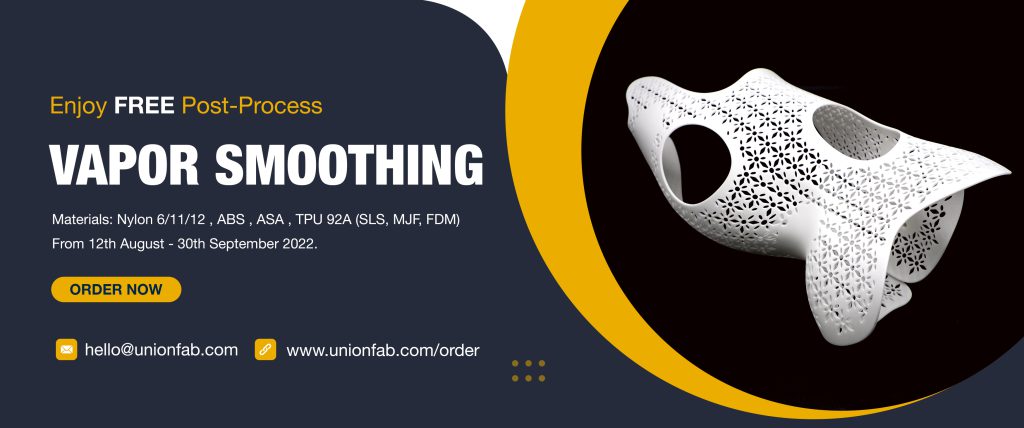With conveyor speed, impact resistance and maximum durability, the drone already fulfils many tasks human ability, or at least the ability to do it efficiently. 3D printing is almost ubiquitousIt affects all aspects of aerospace but is especially powerful—complementary combination and capture with drone technology Harness the power of flight to perform essential tasks.
SAVE 10 WEEKS OF YOUR TIME BY USING 3D PRINTING FOR UAV PARTS

FROM DELIVERIES TO DISASTER ZONES: GOING ABOVE AND BEYOND
Disaster Areas, Search and Rescue
Lightweight 3D printed drones perform tasks such as mapping strategic information and providing live streams to assist search and rescue services in disaster areas. During search and rescue missions, drones provide teams with aerial details to help strategize. Dropping life-saving supplies is also an important task for military applications.
Delivery Systems
Drone-related consumer deliveries have always been expected, but previously such services have been held back due to restrictions. However, with the FAA granting new exemptions in recent years, retailers are ready to make firm promises again. Planning an innovative delivery system
Monitoring and Surveying
Drone technology can be very useful in many levels of monitoring and surveying, such as clearing areas, taking photos, and dropping supplies in challenging locations. With applications in agriculture and real estate, drones are agile and fast, enabling them to traverse vast areas of land in a fraction of the time it takes humans on foot or in-ground vehicles.
Farming and Wildlife
Farms are now using drones to streamline field management, fertilize crops, and use UAVs to monitor the location, number, and condition of free-roaming animals.

3D PRINTING EXPEDITES DRONE PRODUCT DEVELOPMENT
3D printing has become an industry that offers a lot. It is more than the ability to create models and prototypes or the difference between rapid prototyping and 3D printing.
For drones, a myriad of 3D designs and Complex shapes of products can be modelled and printed and used for development and functional consumer products in difficult outdoor climates and scenarios. The additive manufacturing process continues. Growing demand; according to a recent survey, 54 Percentage of engineers say they rely on 3D printing functional parts. In addition, drone technology services are expected to reach $63.6 billion by 2025.
Drone designers must be prepared to evaluate critical details every step of the way, to include:
Drone engineers use technology like Selective Laser Sintering (SLS), eliminating the need for support structures due to the stabilizing force of unsintered powder during the additive manufacturing process. They create agile aerial tools with adaptable 3D printing materials like Nylon 12 [Versatile Plastic]–moving from identifying product needs to building a prototype and a proof of concept, and testing and validating iterations.
1. Intended technology usage level of autonomy and corresponding structure.
2. Size limitations, per regulations and project requirements.
3. Payload specifications, combining the weight of the drone and its parts, as well as added weight for varying applications, which may require a camera too.
4. Options for maximum maneuverability depending on the structure.
5. Blade structure, length, and efficiency.
Drone engineers use techniques such as selective laser sintering (SLS). The Eliminates the need for support structures due to the stabilizing power of the unsintered powder during the additive manufacturing process. Create agile air tools from identifying product requirements to prototyping, proof of concept, and iterative testing and validation using malleable 3D printing materials like nylon 12.

ADVANCED MATERIALS AND TECHNOLOGY FOR 3D PRINTING DRONES
Combining drones and 3D printing makes it easier, more exciting, and more freedom when designing new products aimed at gathering critical data and speeding up workflows. This is made possible by the ever-expanding range of 3D printing materials and processes.
Nylon 12 with Selective Laser Sintering
Selective Laser Sintering offers high accuracy and good mechanical properties for prototypes.
Nylon 12 is extremely popular because it is solid yet flexible too. High ductility translates to more robust, thicker parts 3D printed with greater rigidity, while thinner parts result in more elasticity. SLS 3D printing allows parts to be manufactured on a large scale and does not require support, offering much greater latitude in 3D modelling.
Without support structures, the potential for damaging parts after 3D printing is eliminated. The extra powder can be used in the following productions too, mixed with virgin powder at a 50/50 minimum. Some parts may be 3D printed with 100% virgin powder for even higher quality.

MJF PA12 with Multi Jet Fusion Technology
Materials like Multi Jet Fusion Plastic PA12 are used for rapid prototyping and 3D printed functional products due to high strength and accuracy. Multi Jet Fusion technology is extremely well-adapted for drone prototyping due to precision in parts, as well as the excellence offered in surface quality and texture. MJF, a powder-based technology, relies on an inkjet array moving back and forth to release fusing and detailing agents instead of laser heat. Parts 3D printed via MJF are uniformly strong due to evenly dispersed temperatures, with greater strength due to deep absorption of thermal energy during manufacturing. Large builds are also possible using MJF, which can print many parts simultaneously. MJF technology is unique in its advanced standalone
Cooling prevents warping, shrinking, and failure in parts. Materials can be recycled too after the process, with the mix ratio for MJF typically found to be 80% re-used powder and 20% virgin.

ENSURING QUALITY WITH POST-PROCESSING FOR DRONE TECHNOLOGY
Post-processing is centred around the routine and the required, from removing supports to cleaning. These steps may heavily impact the finished product, improving the integrity or enhancing the appearance of 3D-printed drone parts.
Various types of finishing are included:
Dyeing
Available with Nylon 12 parts can be dyed in a variety of colours. Benefits of dyeing include comprehensive coverage of colour, as well as offering the ability to delineate one system or feature from another, with sensors serving as a great example.
Premium Finishes and Polishing
3D printed material finishes for drones range from natural to premium, spanning basic rough textures to smooth scratch-resistant surfaces meant for high-end products.
Vapor Smoothing
This physio-chemical process smooths visible lines and protects the quality of 3D-printed drone parts. Internal cavities can be smoothed, too resulting in watertight parts with all their mass intact.

